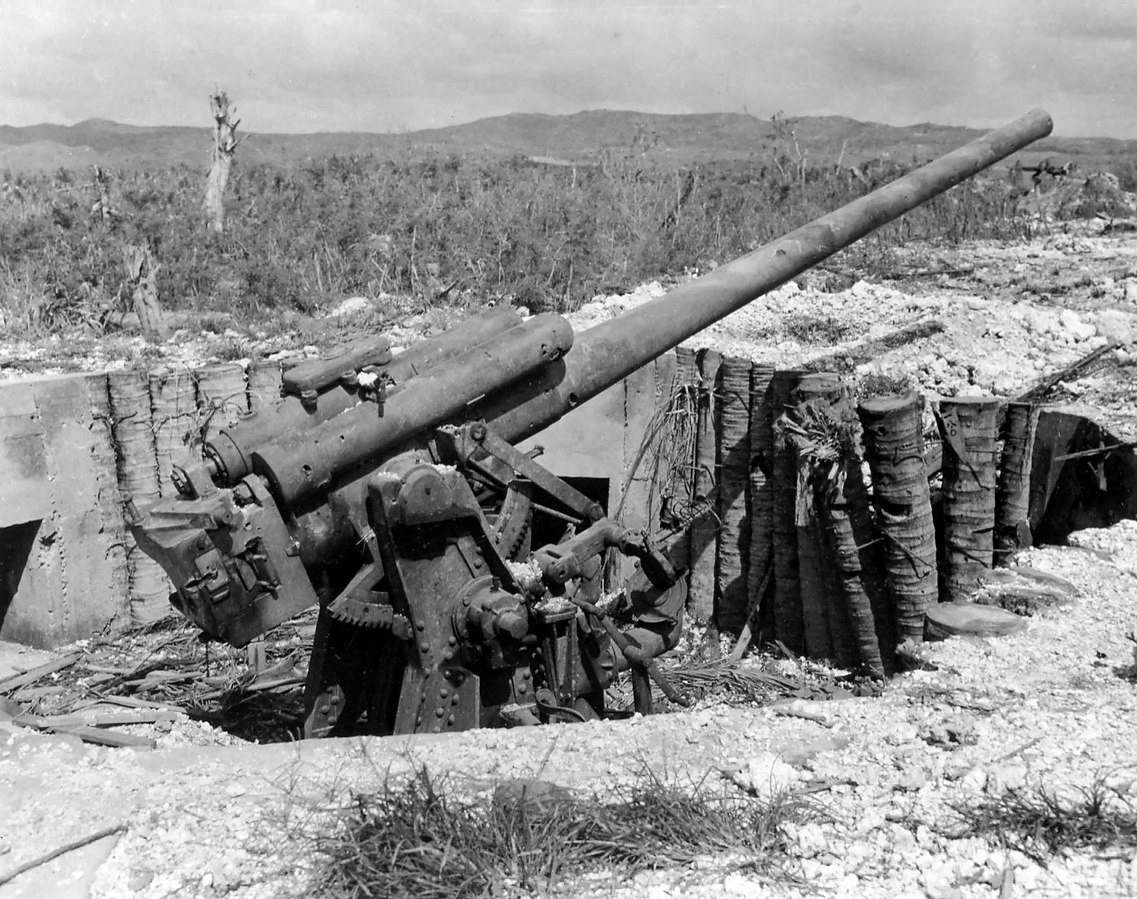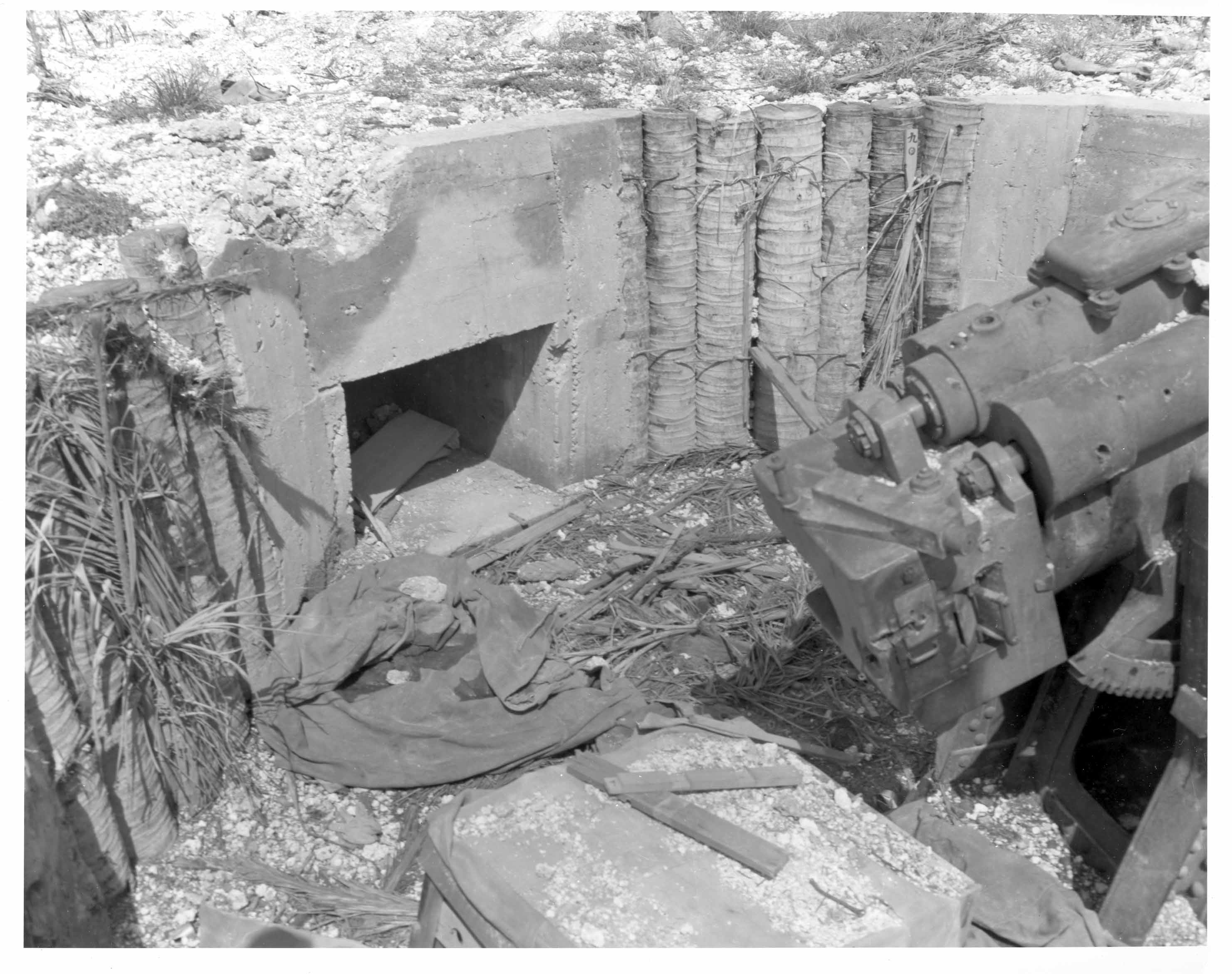This was an AAA weapon derived from the single-purpose 12 cm/45 (4.7") 3rd Year Type. Most cruisers built in the 1920s and early 1930s were armed with this gun for their secondary batteries. During World War II it was used in coastal batteries and still used afloat on unreconstructed cruisers and on many escort and auxiliary ships as well as the carrier Akagi. Considered to be very reliable weapons.
The four Myôkô class cruisers conducted AA trials with these guns in 1931. Steaming at 18 knots and using the the Type 89 HA computer, the cruisers scored 2.2% hits against aerial targets towed at 60 to 70 knots at altitudes of 1,500 to 2,000 m (4,900 to 6,600 feet). Firing was at an average of 6.4 rounds per minute at ranges between 2,000 and 5,500 m (2,200 and 6,000 yards).
The carrier Kaga and those cruisers modernized during the late 1930s had these weapons replaced by the 12.7 cm/40 (5") Type 89 AA gun. However, Akagi carried them to her end at Midway.
The earlier guns were of built-up construction but the later ones were of monobloc construction. All used a semi-automatic sliding breech-block mechanism. A total of about 3,000 guns were manufactured, with 2,320 (one source says 2,152) of them being produced between 1942 to 1945.
| Designation | 12 cm/45 (4.7") 10th Year Type (Model 1921)
Official Designation: 45 caliber 10th Year Type 12 cm |
|---|---|
| Ship Class Used On | Originally:
Most carriers and cruisers World War II
|
| Date Of Design | 1921 |
| Date In Service | 1926 |
| Gun Weight | 2.9 tons (2.95 mt) |
| Gun Length oa | 220.6 in (5.604 m) |
| Bore Length | 212.6 in (5.400 m) |
| Rifling Length | 183 in (4.649 m) |
| Grooves 1 | (34) 0.057 in deep x 0.263 in (1.45 mm x 6.688 mm) |
| Lands | 0.173 in (4.40 mm) |
| Twist | Uniform RH 1 in 28 |
| Chamber Volume | 657.5 in3 (10.774 dm3) |
| Rate Of Fire | Maximum: 10 - 11 rounds per minute
Effective: 6 - 8 rounds per minute |
- ^Some guns had 36 rather than 34 grooves.
| Type | Fixed |
|---|---|
| Weight of Complete Round | Common Type 0 HE: 75 lbs. (34 kg)
Common Type 1 HE: 75 lbs. (34 kg) Others: N/A |
| Projectile Types and Weights 1a | Common Type 0 HE 2a: 44.9 lbs. (20.3 kg)
Common Type 1 HE: 44.9 lbs. (20.3 kg) Common Type 4 IS 3a: N/A ASW 4a: 36.3 lbs. (16.4 kg) Illum 5a: about 44.9 lbs. (20.3 kg) New Type Projectile 6a: 49.6 lbs. (22.5 kg) |
| Bursting Charge | Common Type 0 HE: 3.75 lbs. (1.7 kg)
Common Type 1 HE: 4.07 lbs. (1.9 kg) ASW: 7.19 lbs. (3.8 kg) New Type Projectile: 4.07 lbs. (1.9 kg) |
| Projectile Length | Common Type 0 HE: 16.0 in (40.8 cm)
Common Type 1 HE: 16.0 in (40.8 cm) ASW: 16.4 in (41.5 cm) New Type Projectile: 20.3 in (51.6 cm) Complete Common HE Rounds: 37.0 in (94 cm) |
| Cartridge Case Type, Size and Empty Weight | Brass, 120 x 708R, 30 lbs. (14.4 kg) |
| Propellant Charge | Common charge (prior to 1929): 11.2 lbs. (5.06 kg) 36 C2
Common charge (after 1929): 12.1 lbs. (5.5 kg) 30 DC Reduced charge: [Weight N/A] 36 C2 or 30 DC or 20 T2 Light charge: [Weight N/A] 20 C2 or 20 C3 ASW charge: N/A |
| Muzzle Velocity 7a | Common HE: 2,707 to 2,723 fps (825 to 830 mps)
Illum: 2,297 fps (700 fps) ASW: 820 fps (250 mps) |
| Working Pressure | 16.8 tons/in2 (2,650 kg/cm2) |
| Approximate Barrel Life | 700 - 1,000 rounds |
| Ammunition stowage per gun | 200 - 250 rounds |
- ^The same projectiles were also used by the Type 11 guns, but they used different cartridge cases.
- ^Common Type 0 HE was supplied with time fuzes for AA defense. US Naval Technical Mission to Japan report O-19 says that this round had an effective radius of 19.84 yards (18 m) but this seems to be optimistic.
- ^IS is my abbreviation for the incendiary shrapnel round (sankaidan) intended for AA use.
- ^The flat-nosed ASW projectile was issued in 1943 following extensive testing.
- ^Illumination rounds were rated at 600,000 candle power and had a maximum range of 15,310 yards (14,000 m).
- ^"New Type Projectile" is the designation used in the US Naval Technical Mission to Japan report O-19. This projectile was under development at the end of the war with production just beginning and may have entered actual service use. This projectile was boat-tailed, had a more streamlined nose at 13crh, a maximum surface range of 22,430 yards (20,500 m) and a maximum AA Ceiling of 42,660 feet (13,000 m) at 75 degrees elevation.
- ^A serious fault of this weapon was that the propellant did not fully combust before the projectile left the muzzle, leading to irregular muzzle velocities. Late in the war, a tubular grain charge was introduced which gave much more regular performance without increasing the working pressure or muzzle velocity.
| Elevation | Range |
|---|---|
| 45 degrees | 17,500 yards (16,000 m) |
| 75 degrees | 32,800 feet (10,000 m) |
| Elevation | Range |
|---|---|
| 40 degrees | 4,375 yards (4,000 m) |
Minimum range of ASW shell is given as 750 yards (820 m). Ranges less than this tended to ricochet.
| Designation 1b | Single Mounts
Aoba (4), Myôkô (6), Yaeyama (2) and Shirataka (3): B 2b 3b Furutaka (4), Takao (4), Taiyo (4) and "improved Taiyo" (8): B2 Mikura (Type B escort) (1), Ukuru (Modified Type B escort) (1), Kaikoban I (Type C escort) (2) and Kaikoban II (Type D escort) (2): C Twin Mounts
|
|---|---|
| Weight | Single Mounts
B: 7.7 tons (7.8 mt) B2: 9.8 tons (10.0 mt) C: N/A Twin Mounts
|
| Elevation | -10 / +75 degrees |
| Elevation Rate 5b | B: Manually operated, only
B2 and A2: 6.5 degrees per second C: N/A (probably 6.5 degrees per second) |
| Train | Larger ships: About +/- 70 degrees |
| Train Rate 5b | B: Manually operated, only
B2 and A2: 10 degrees per second C: N/A (probably 10 degrees per second) |
| Gun recoil | 19.3 in (49.0 cm) |
| Loading Angle | Any 6b |
- ^Information about the Type C mounts in this table is the result of analysis of data presented in the sources below.
- ^The Aoba and Myôkô classes were refitted with B2 mounts during the early 1930s.
- ^Light shields were added to many single mounts during the 1930s.
- ^This twin mount was also used on auxiliary ships.
- ^All mountings were hand loaded and fuze setting was by hand.



"Naval Weapons of World War Two" by John Campbell
"Japanese Cruisers of the Pacific War" by Eric Lacroix and Linton Wells II
"Anatomy of the Ship: The Heavy Cruiser Takao" by Janusz Skulksi
"Japanese Warships of World War II" by A.J. Watts
"Cruisers of World War Two" by M.J. Whitley
---
"Catalog of Enemy Material: 01 March 1945" by Office Chief of Ordnance (US Army)
US Naval Technical Mission to Japan report O-19: Japanese Projectiles General Types
US Naval Technical Mission to Japan report O-47(N)-1: Japanese Naval Guns and Mounts-Article 1, Mounts Under 18"
---
Special help by Anthony Williams
28 December 2008 - Benchmark
25 December 2011 - Added information about cruiser and escort mountings
21 July 2015 - Added propellant information
05 August 2017 - Converted to HTML 5 format
15 August 2018 - Reorganized notes
21 March 2019 - Added note regarding time fuzes on Common Type 0 HE
09 October 2020 - Corrected typographical error
23 September 2022 - Added cartridge case information
08 January 2023 - Added trajectory chart and mounting information

